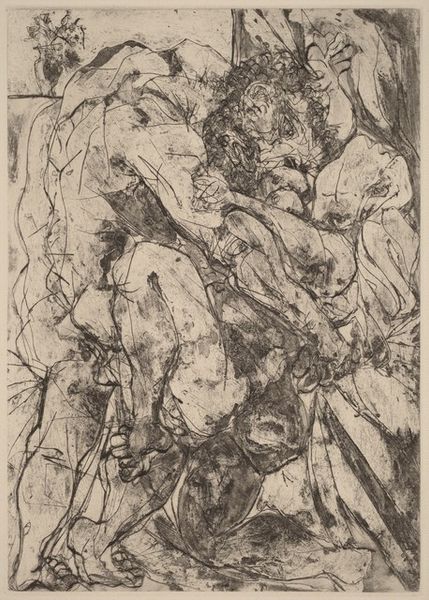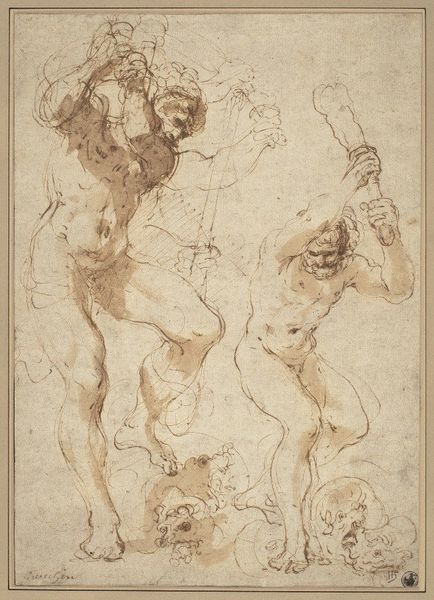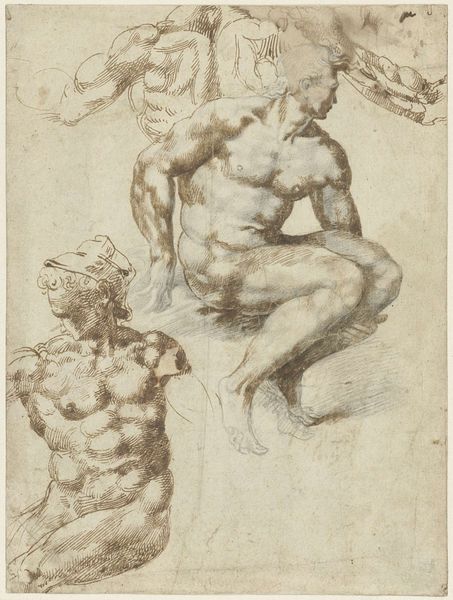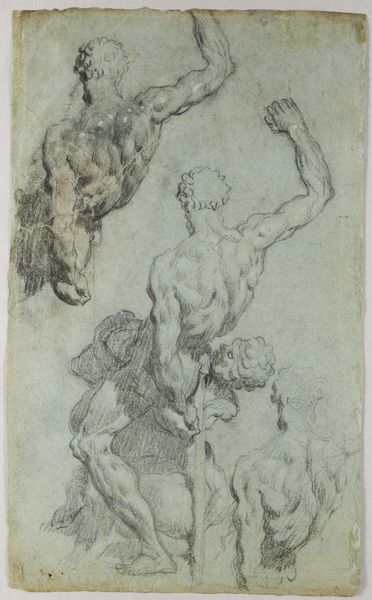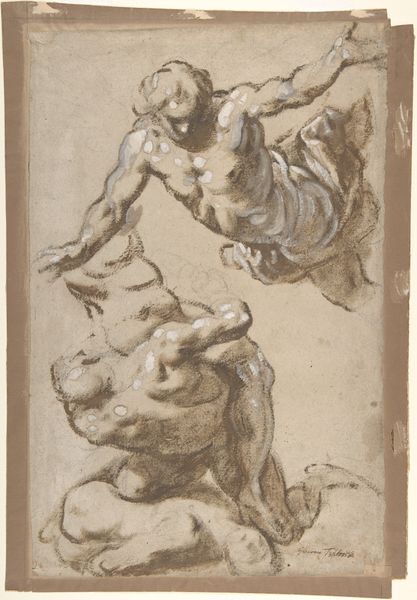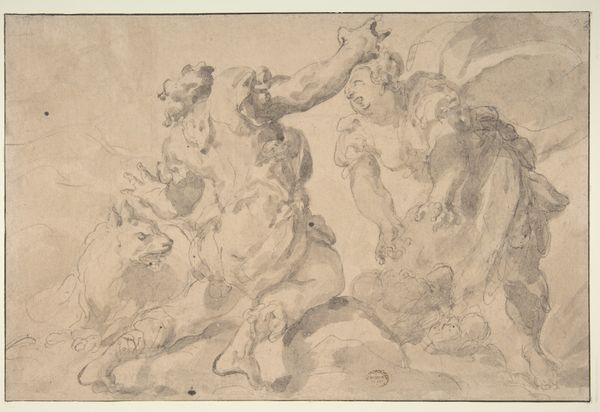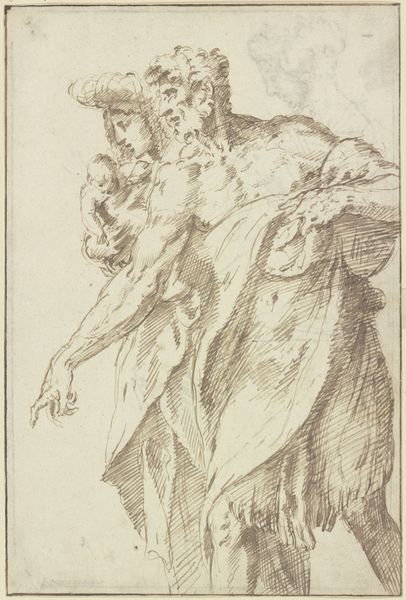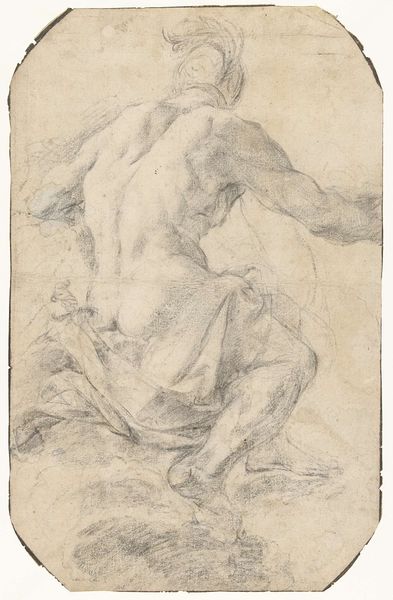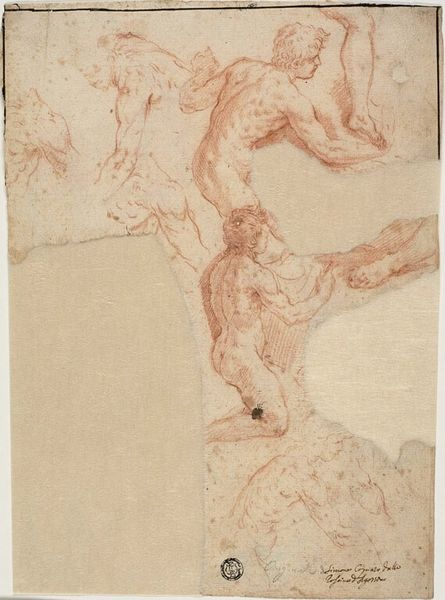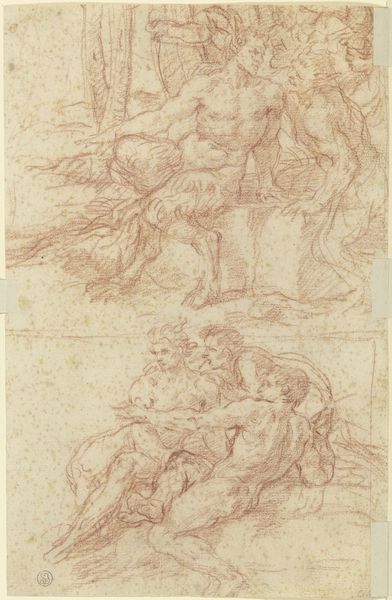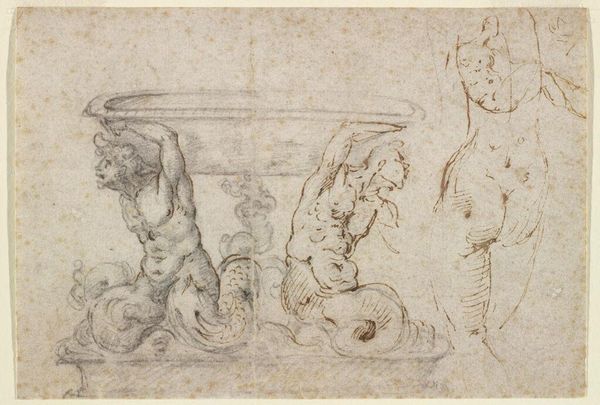
drawing, pencil, charcoal
#
pencil drawn
#
drawing
#
pencil sketch
#
charcoal drawing
#
mannerism
#
figuration
#
pencil drawing
#
pencil
#
charcoal
#
history-painting
#
italian-renaissance
Copyright: Public Domain: Artvee
Editor: Here we have "Two Studies of Samson Slaying the Philistines" by Jacopo Tintoretto, likely dating from the late 16th century. It's a drawing rendered in pencil and charcoal. I'm immediately struck by the dynamism and intense energy conveyed through these figures; they feel almost caught in a whirlwind. How do you read this work? Curator: Dynamism is an astute observation. Consider the composition: Tintoretto uses hatching and cross-hatching to build volume and muscularity, concentrating dark tones in areas of compression and exertion. Notice also how the figures lack definitive outlines, seemingly emerging from a background void. What effect does this have, visually? Editor: It definitely adds to that feeling of movement, as if they're bursting out of the page. The lack of crisp lines makes them seem less static, more like fleeting impressions. Curator: Precisely. This contributes to the Mannerist aesthetic, favouring dynamism, drama, and exaggeration over the classical ideals of balance and proportion. Consider the distorted perspective and the anatomical exaggerations; the figures possess an almost superhuman physique, achieved through tonal gradations, allowing to emphasize the contrast between light and shadow, giving more space to interpret. Editor: So, the focus isn’t necessarily on realistic representation but rather on conveying emotion and a sense of dramatic tension through the very form itself? Curator: Indeed. Tintoretto employs line, tone, and composition as expressive tools, prioritizing the visual impact over precise anatomical accuracy. The medium, pencil and charcoal, further serves this aim, lending itself to spontaneous and gestural marks. Did the experience change the initial emotion? Editor: Absolutely. I came in only thinking it was a snapshot of a crucial scene, but now I understand the movement within its material components is equally important, reflecting and increasing the impact of the history told by it. Thank you! Curator: It’s a rewarding thing to see, and I thank you for the chat!
Comments
No comments
Be the first to comment and join the conversation on the ultimate creative platform.
